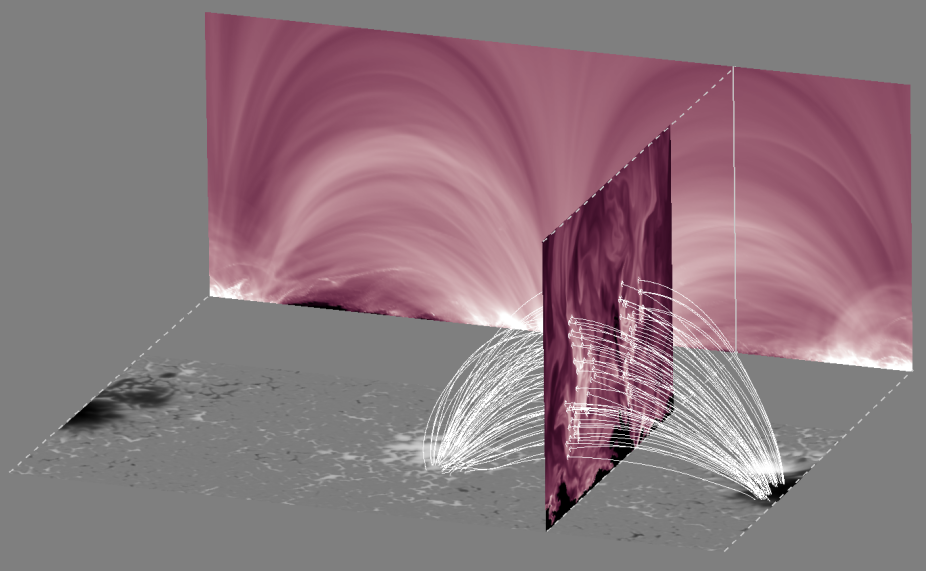Publication: Astrophysical Journal; Authors: Malanushenko, A.; Cheung, M. C. M.; DeForest, C. E.; Klimchuk, J. A.; Rempel, M.

3D view of the simulated corona; bottom panel: magnetogram; back panel: synthetic AIA 211A coronal image; middle vertical plane: volumetric emissivity. Field lines are included for reference.
Coronal loops, seen in solar coronal images, are believed to represent emission from magnetic flux tubes with compact cross sections. We examine the 3D structure of plasma above an active region in a radiative magnetohydrodynamic simulation to locate volume counterparts for coronal loops. In many cases, a loop cannot be linked to an individual thin strand in the volume. While many thin loops are present in the synthetic images, the bright structures in the volume are fewer and of complex shape. We demonstrate that this complexity can form impressions of thin bright loops, even in the absence of thin bright plasma strands. We demonstrate the difficulty of discerning from observations whether a particular loop corresponds to a strand in the volume, or a projection artifact. We demonstrate how apparently isolated loops could deceive observers, even when observations from multiple viewing angles are available. While we base our analysis on a simulation, the main findings are independent from a particular simulation setup and illustrate the intrinsic complexity involved in interpreting observations resulting from line-of-sight integration in an optically thin plasma. We propose alternative interpretation for strands seen in Extreme Ultraviolet images of the corona. The "coronal veil" hypothesis is mathematically more generic, and naturally explains properties of loops that are difficult to address otherwise-such as their constant cross section and anomalously high density scale height. We challenge the paradigm of coronal loops as thin magnetic flux tubes, offering new understanding of solar corona, and by extension, of other magnetically confined bright hot plasmas.